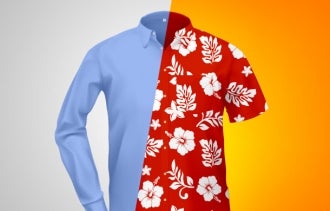
Being a brand is what separates you from your competitors and creates a much stronger connection with your customers.
Need. Our customers need certain things from our business. A need is fulfilled by a functional benefit -- a fact or rational attribute about your company. Generally speaking, most competitors in any field supply roughly the same functional benefits and can therefore generally fulfill the needs of their customers. If they couldn't, they wouldn't be in business. Fulfilling a need doesn't differentiate one business from another; it's a cost of entry.
Want. In order to be truly successful in business, your customers have to move beyond just needing your product or service to actually wanting it. While they may need the functional benefits that your business offers, it's important for your brand that they want to choose you over other options. The "want" is what separates your business from others, and turns you into a brand.
Related: Why Startups Should Take a Big-Brand Approach to Marketing
"Want" is an emotion, and therefore represents the more connective benefits your business and brand offers. When you reach an emotional level with your customers, you become a brand in their minds. You've made an emotional connection that rises above functional features and that builds loyalty. It's the "want" that moves you from being an ordinary product or service to being a desired brand.
Let me illustrate. You need to wear a shirt every day -- we all do -- to keep warm and dress appropriately for work. These are functional benefits you quite honestly can get from almost any shirt company.
But let's say you personally choose a shirt brand that targets a younger more stylish consumer. Maybe it's the style and fit of the shirt, or the way it's merchandised in-store, or the website that draws your attention and sweeps you in. In fact, all of the above work together to build an emotional connection that make you want this specific brand shirt.
This brand, for you, has risen above the functional benefits of just any shirt to the emotional benefits of what the brand does for you.
Finding the "want" is key to building a stronger, more emotional connection with your customers. And it's this emotional benefit that will become the basis of your entire marketing plan moving forward.
Through your daily activities with customers, start thinking about how you can connect more emotionally, moving them beyond just needing you to actually wanting you.
Jim Joseph is the North American president of New York-based communications agency Cohn & Wolfe, part of the media company WPP Group PLC. He is the author of three books, including the latest, The Personal Experience Effect (Happy About 2013). Joseph also teaches marketing at New York University and blogs at JimJosephExp.com.
Follow Engee's Business Guide on Facebook and Twitter

No comments:
Post a Comment